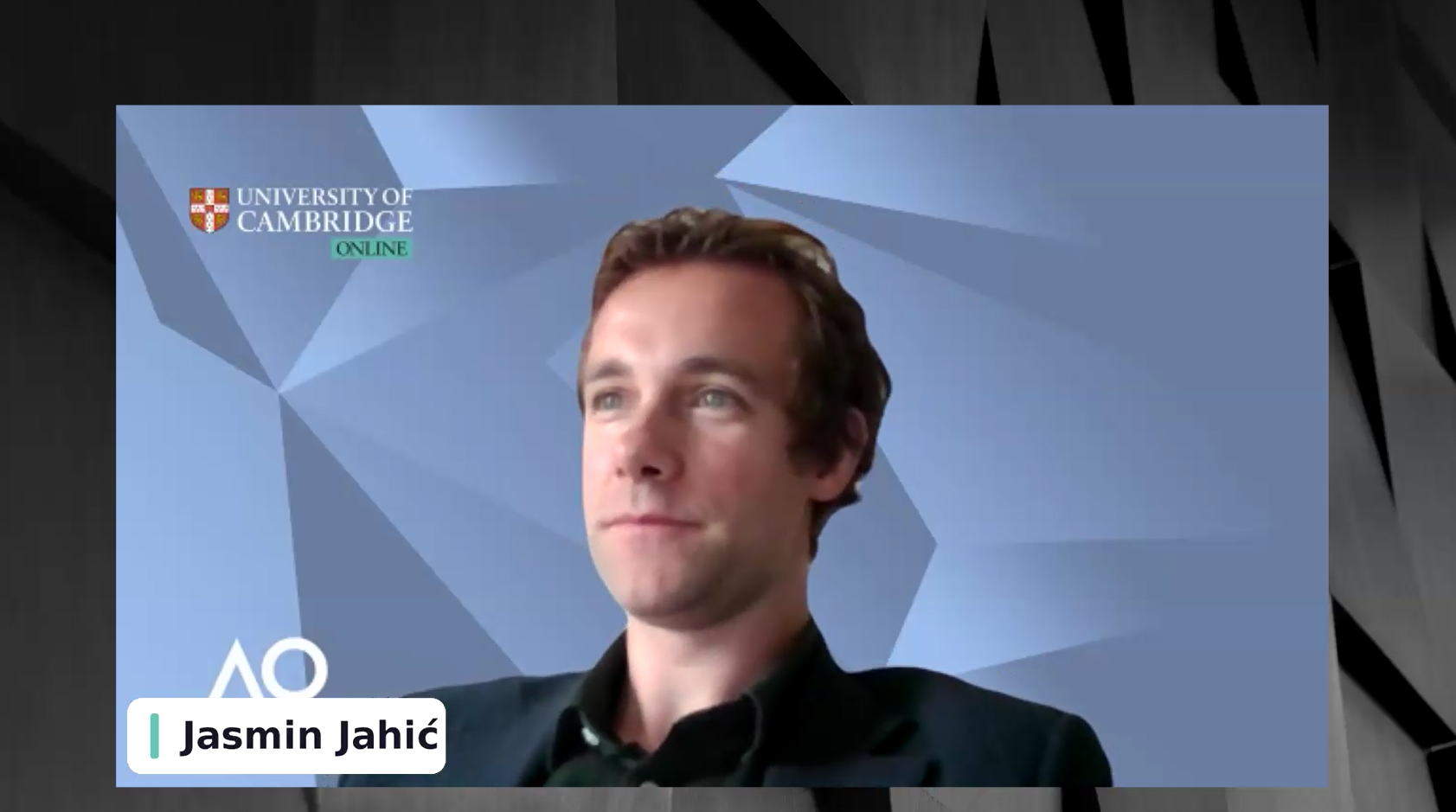Technology and Development
Cambridge’s Dr Jahić Discusses Software Architecture in Live Q&A Webinar
Technology and Development
Cambridge’s Dr Jahić Discusses Software Architecture in Live Q&A Webinar
On the 2nd July 2025, Cambridge Advance Online, part of the University of Cambridge Online, hosted an exclusive webinar with Dr Jasmin Jahić from the University of Cambridge, diving deep into the Managing Software Architecture online programme.

This session offered valuable insights into why this course is an excellent choice for professionals seeking to advance their careers in software architecture and strategic software engineering and offers a competitive advantage for organisations looking to enrol groups of learners to expand the capabilities of wider teams.
During the webinar, Dr Jahić explored the course content, its practical relevance, and demonstated how organisations can benefit from the skills taught. The event concluded with a live Q&A, where Jasmin answered many of the attendees’ questions about the course.
You can watch the full Managing Software Architecture webinar here:
Below is a curated selection of some of the questions from that session, along with detailed answers from Dr Jahić to help you understand what to expect from the Managing Software Architecture programme.
Questions and Answers at the Managing Software Architecture Webinar
Q: Does the course Managing Software Architecture cover C4, UML, CI/CD, and trade-off analysis?
A: There are several elements in that question, so I’ll address them one by one.
C4: Yes, the course heavily covers C4 architectural views, including examples demonstrating its application.
UML: UML is mentioned, but we don’t focus on teaching UML directly. However, we recommend creating customised modelling profiles based on UML.
CI/CD: Yes, we cover CI/CD and discuss it in the context of continuous architecture—how to organise the full methodology to apply CI/CD with continuous architecture.
Trade-off analysis: Definitely. We explore it in the context of making architectural decisions, comparing options, and understanding the trade-offs when optimising for specific quality properties.
Q: Is this course suitable for students with little technical background?
A: The course is more suitable for industry professionals. If someone has a background in computer science or experience in software development, they could benefit. However, the course is primarily designed for senior engineers and technical project managers—those with a technical foundation and a role in business or organisational strategy.
Q: My main difficulty is organising the solution development process before coding. Does the course help with this?
A: Yes, absolutely. That’s exactly what we cover. The course focuses on strategic thinking in software engineering—not just as a phase but as a continuous process throughout the project.
Q: Does this course cover the foundational knowledge of software architecture?
A: Yes.
Q: What technical applications does this course cover?
A: The course includes a range of exercises where learners apply what they’ve learned—making architectural decisions, creating models, and scoping problems and methodologies. We also discuss tools that support these processes.
Q: Does this course explore strategic and tactical Domain-Driven Design (DDD)?
A: Yes.
Q: What is the biggest change students experience after completing the course?
A: Many students say they start thinking like software architects. One student, a senior developer, realised during the course that they had never previously considered some of the architectural responsibilities. The course changes the way participants approach problems. Others mention improvements in documentation, the development process, and confidence to suggest changes in their organisations.
Q: How is AI leveraged in this course?
A: While the course isn’t AI-focused, we do cover how AI relates to software architecture, particularly in Module 6. We summarise the latest developments, practices, benefits, and drawbacks. It’s an active area of research.
Q: Do you also cover some design patterns?
A: Yes, we cover design patterns extensively—especially those that improve software quality.
Q: The content seems aligned with the ISAQB Software Architecture Foundation certificate. Is that intentional?
A: No, we did not intentionally align the course with ISAQB. The course was created based on years of collaboration with industry, aiming to address the most relevant and practical topics while maintaining theoretical depth.
Q: Are the 6 to 8 study hours per week flexible, or are there fixed sessions?
A: The 6 to 8 hours per week are asynchronous—learners can study whenever it suits them. There is one optional live session per week with Yasmin, which is a great opportunity for discussion and Q&A.
Q: Is the course content applicable across different platforms and domains, such as mobile apps or back-end systems?
A: Yes. We don’t target a specific industry. Previous participants have come from diverse sectors—medical, embedded systems, mobile apps—and the course content has proven applicable to all.
Q: I’m an enterprise architect, not a software developer, but I work with aligning business and technology. Is this course relevant for me?
A: Yes. The course targets two groups: senior software engineers and technical managers. If you work in management and have some technical background—especially in business-to-technical alignment—this course is relevant.
Q: What kind of tests do I need to pass the course?
A: The main assessment is a final project assignment. Throughout the course, there are also quizzes and small tasks that contribute to your grade.
Q: What type of certificate do students receive?
A: Students receive a Certificate of Achievement and an electronic badge that can be shared on personal profiles.
Q: Will I receive a certificate of attendance or CPD for today’s session?
A: No, unfortunately not. However, the full course (including MSA) is CPD-approved.
Q: Are discounts or scholarships available?
A: Yes, we offer discounts for both group and individual bookings. Please get in touch by email or request a call-back and we’ll guide you through the process.
Q: Is the final project expected to be completed within the 8-week duration, or is there flexibility?
A: After the 8-week course, participants have an additional 2 weeks to work on their final project assignment. The course is designed for people working full-time, and we accommodate extensions when needed. The 2-week period allows learners to polish and synthesise their work from the course.
If you want to learn more about the Managing Software Architecture programme, visit the course page here to explore enrolment options, detailed syllabus, and upcoming start dates.
To watch the full webinar session where these questions were answered live by Dr Jasmin Jahić, you can view the webinar recording on YouTube here(Opens in a new window).
We hope this Q&A helps you better understand how the Managing Software Architecture course can support your professional development in software architecture and engineering.
If you have any further questions or would like personalised guidance, feel free to reach out to our team(Opens in a new window)!
You can also find out more about the Managing Software Architecture course or directly enrol(Opens in a new window) for yourself or your team.

